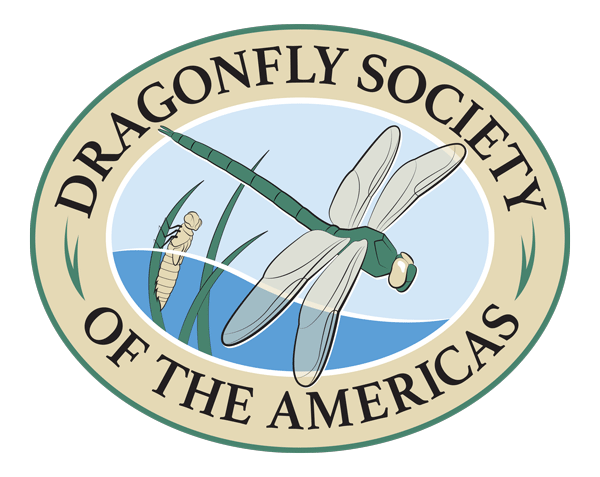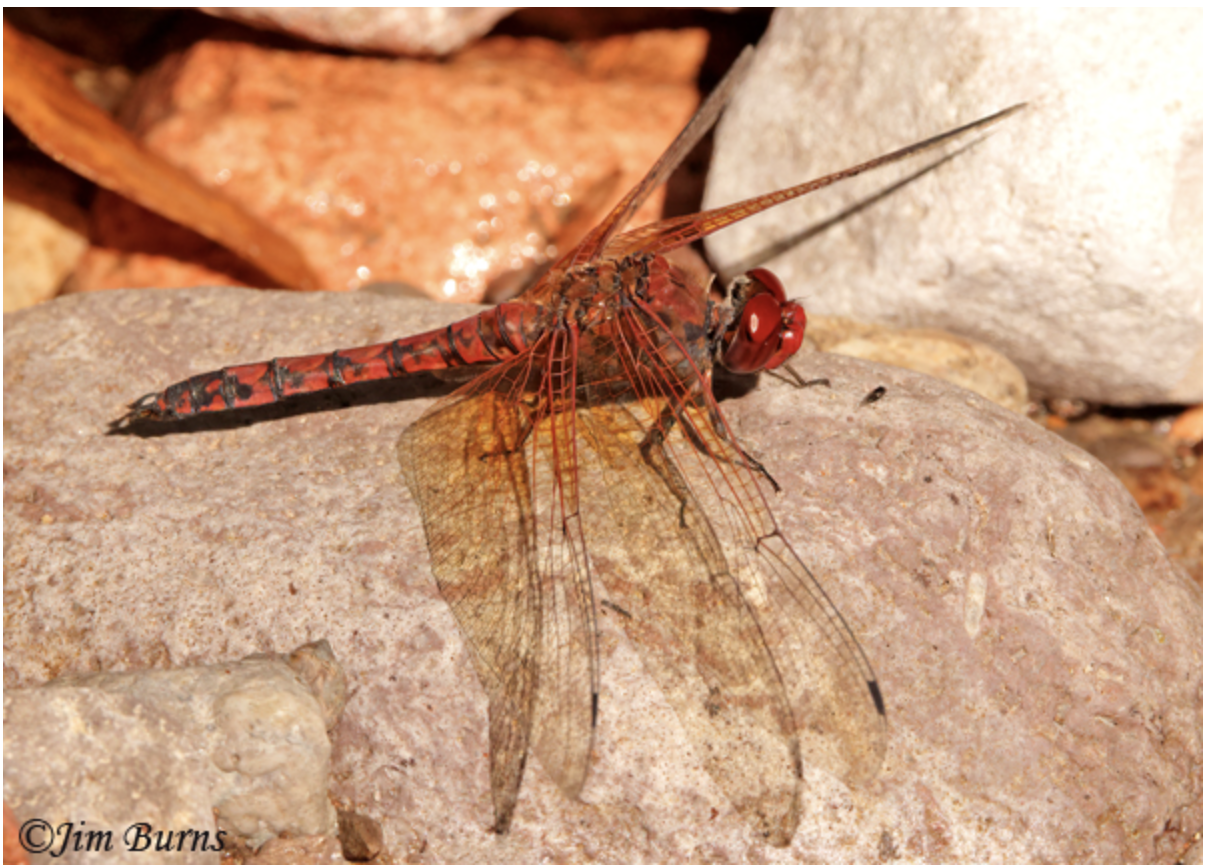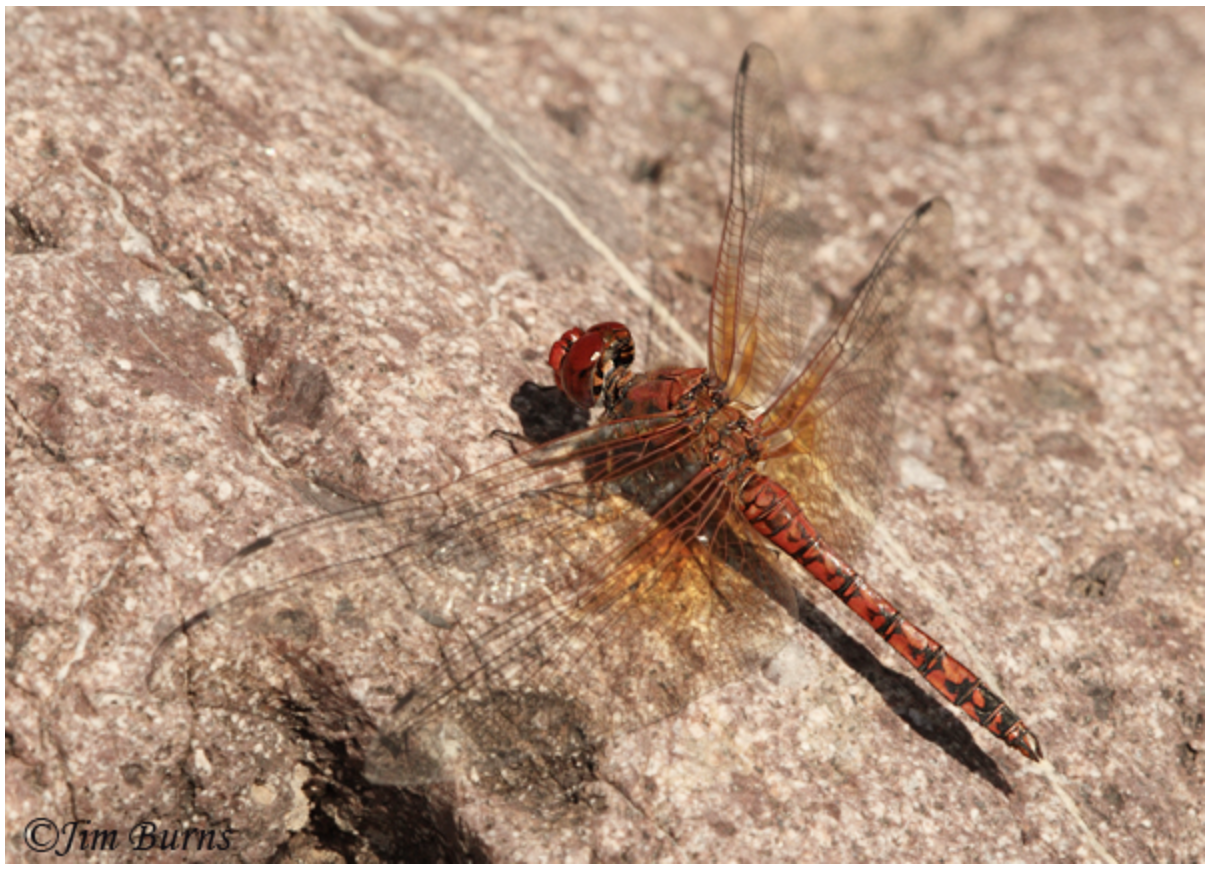June Species of the Month: Olive Clubtail (Stylurus olivaceus)
Stylurus olivaceus male. Vancouver, WA, 15 August 2008. Photo by Jim Johnson (Used with permission).
DSA’s June Species of the Month is the Olive Clubtail (Stylurus olivaceus), a medium-sized dragonfly in the family Gomphidae. It is a river species found from California and Utah north to British Columbia, and is approximately 60 mm long (just under two and a half inches or less). Enjoy dragonfly expert Rob Cannings’ stories of this rare species.
Hanging from a Leaf in British Columbia
I grew up along the Okanagan River in southern British Columbia. When I return to my hometown of Penticton, I walk the river dikes, watch the mergansers on the river and listen to the catbirds and orioles in the dogwoods and cottonwood trees. I’m an entomologist, though, with a special interest in dragonflies, and I love to keep track of these bold, beautiful insects along the river. The rarest of the rare here is the Olive Clubtail, Stylurus olivaceus.
In the late 1920s, more than three decades before the river was straightened, dredged, and dammed to control flooding, my father used to paddle his home-made kayak on the river. When I was a kid he’d tell me of his adventures there. “Birches hung over the gravelly riffles and willows lined the sandbars along the slower flowing, meandering reaches,” he’d say. “We’d explore all day in the woods along the shore, in the cattail marshes and wet meadows that lined the old oxbows.” I’d listen raptly to his boyhood stories of a landscape now almost completely gone. The river empties out of 80-mile-long Okanagan Lake and winds south to join the Columbia River in Washington State. It used to flow through riparian woods in sage and antelope-brush grasslands. Now, much of the land along the river is rich farmland or urban development.
Stylurus olivaceus male and female mating. Vancouver, WA, 19 September 2006. Photo by Jim Johnson (Used with permission).
Olive Clubtails are seldom found anywhere along the Canadian part of the Okanagan River. The channel bottom is lined with rocks and boulders; the sand and silt the larvae need for burrowing is scarce and patchy.
For evidence of larvae, I look for an exuvia, the cast skin of the last larval stage, which remains clinging to shoreline debris after the adult has emerged and flown away. I’ve never found exuviae on this river. And the trees and shrubs that the adult dragonflies love to perch on beside the water are mostly gone, replaced by grasses and weeds.
Figure 3. Stylurus olivaceus larva, buried in sand, preying on cranefly larva. Illustration by Rob Cannings (Used with permission).
In all my Okanagan River dike-walking I’ve found only three adults. The first one was camouflaged like a gray-green and black twig, perched flat on the dusty trail at Osoyoos Lake, almost at the US border. On another walk much later, I saw one flying over the river. After a while it flew towards a lone tree on the dike. “Aha!”, I thought, “It landed there!” Stylurus dragonflies are called “Hanging Clubtails” because they usually perch on the leaves of trees or shrubs, bending the twig until they are hanging almost vertically. Sneaking up, I searched the lower branches for minutes before I saw the dragonfly hanging from a leaf, just as it was supposed to do! My third sighting was of a male flying up the river, fast and straight as an arrow, not stopping for anyone.
Okanagan River, Okanagan Falls, BC, 24 September 2009. Photo by Richard Cannings (Used with permission).
There are only three small, separate populations of the Olive Clubtail in BC (and all of Canada). Most that I’ve studied live at the most northerly place the species is known – the Thompson River near Kamloops, about 80 air miles northwest of Penticton. For about 35 miles east of the city, this big river flows through sagebrush, farms and riverside suburbs, the water warmed to 21 or 22ºC (about 70-71℉) in summer from its stay in the huge Shuswap Lake to the east. At Kamloops, it’s joined by the North Thompson River, with its colder waters draining mountain snowfields. Here the water is about 18ºC (64℉) at dragonfly emergence time and I suspect the water is too cold for Olive Clubtails at this time of year. I’ve never seen this species in the North Thompson, even though other conditions such as sediment and stream flow seem perfect. Downstream from Kamloops the Thompson River flows faster and the riverbed is filled with boulders which, as we saw in the Okanagan River, is a habitat disliked by these dragonflies.
It’s ironic that one of the best places anywhere to find the Olive Clubtail---such a lover of warm climates----is as far north as they can live. But here much of the habitat is still good – a sandy, silty riverbed; stable banks clothed with emergent water plants such as rushes and horsetails; riverside willows and introduced Russian Olive trees hanging over the water.
Certainly, there are stretches where cattle have trampled the shore, where irrigation water has eroded the banks, and where rocky fill has been dumped to support the railway line and subdivisions full of houses. But there is still enough good shoreline to support a decent population of dragonflies. In some places I picked up an exuvia for every yard of sandy riverbank I walked. They lie among the detritus of high water in the patches of horsetails and rushes and are coated in a thin layer of silt, a reminder of the larva’s burrowing life.
South Thompson River, near Kamloops, BC, 25 August 2008. Photo by Rob Cannings (Used with permission).
Luckily, the habitat does not need to be pristine. The clubtail can tolerate some disturbance and habitat damage. I found exuviae in the imprints of cow hooves and observed some adults emerging at a busy boat launch. But I imagine carp and other introduced, bottom-feeding fish can damage the population by disturbing the bottom mud or eating the larvae. Motorboats speeding by stir up the bottom silt and erode the sandy banks with their wakes.
Along the river here in mid-August the adult dragonflies emerge, pale and vulnerable, easy pickings for blackbirds and kingbirds.
Stylurus olivaceus exuvia. South Thompson River, near Kamloops, BC, 25 August 2008. Photo by Rob Cannings (Used with permission).
I suppose the clubtails fly back in the grasslands to hunt and mature for several days, later returning to the river to mate and lay eggs. In late August and September, now and again, I’ve watched a male patrolling over the current, chasing down a female, the pair then disappearing into the trees while they mate. Later, the female flies fast out over the river, dipping her abdomen into the water and washing off the eggs.
Because these populations are small and fragmented and the few stretches of rivers where it lives are vulnerable, the Olive Clubtail is considered an endangered species in Canada. Its future is of less concern in the western United States where it is more widespread. In some places, such as the Lower Columbia River, it is common. Downriver of Portland it even lives in waters affected by the tides where it seems to tolerate some salinity.
Stylurus olivaceus teneral female. South Thompson River, near Kamloops, BC, 15 August 2008. Photo by Darren Copley (Used with permission).
The Olive Clubtail is characteristic of the big rivers of the dry West. Although in many places it’s been hit hard by the upheavals humans have brought to its home, and is now rare, it remains common in some localities. It’s a symbol of perseverance in a rapidly changing landscape.
This essay is abridged from a chapter written by Rob in Wading for Bugs: Exploring Streams with the Experts. Published by Oregon State University Press (2011). It is presented here with permission from OSU Press.
Rob Cannings is Curator Emeritus of Entomology at the Royal BC Museum, where he was curator from 1980 to 2013. He grew up beside an Okanagan Valley grassland in a family known across Canada for its contributions to natural history and conservation. Rob’s research interests focus on insect systematics and faunistics, especially in the Odonata and Asilidae, but he publishes widely on many insect groups. He is the author or co-author of six books, including Introducing the Dragonflies of British Columbia and the Yukon (2002)














































